My first Jewish community professional paying gig was as a B’nai Mitzvah Tutor at my childhood synagogue. The first prayer I would teach my students was the pre-blessing to the chanting of the Haftorah, a selection from the Biblical book of Prophets. I always enjoyed teaching the pre-blessing. It established a working rapport with my student, helping me learn how best the student likes to learn and practice. Once we got past the pre-blessing, we were ready to dive into learning the Haftorah blessing with increased confidence and energy.

The pre-blessing is like a pre-game ritual. It’s the wisdom of preparing ourselves so we are properly ready to chant the Biblical passages. Building on and applying this Jewish wisdom to our discussion, I offer this pre-blessing, defining our term and providing important background information to help “prepare the canvas” for the professional portraits and “big ideas” we will encounter.
Defining Our Exploration
I selected a small diverse group of 13 Jewish community professionals who inspired me. I asked each of them a series of 10 questions that you can find in the appendix to this book. I wanted to learn about each of their career paths and personal journeys, and uncover whether their journey, though unique, could help inform how we all might better:
- inspire the current and next generation of professionals to make an intentional career choice to become and remain Jewish community professional.
- properly and rigorously motivate, inspire, and support our talent so they want to stay, because they feel they can reach their full potential working in our field.
Choosing the Individuals: A Focus on Diversity
Each person was comfortable speaking to me about their compensation, career transitions, implications around DEIJ (diversity, equity, inclusion, and justice) in their work situations, and other sensitive and personal topics.

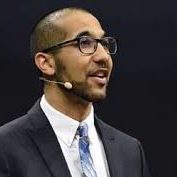
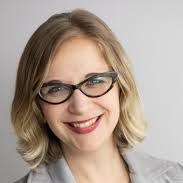
These narratives also represent a mix of
These professionals are also neither at the very beginning nor anywhere near the end of their careers. Each has significant experience, yet they still have hopes and dreams for their career journeys, where our field can go and grow, and how they hope to experience it in the decades they have left to serve.
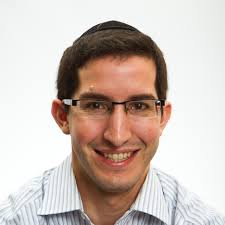
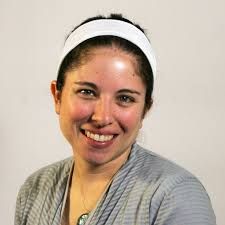
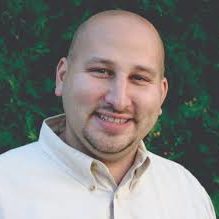
From the standard questions I asked each participant, each conversation took on a life of its own, and this is in part why each blessing, while focused on a strategy with narrative support, not the other way around, have a different structure or tone. At the same time, each narrative provides insights into key questions that permeate this book. I also put these narratives into conversation with each other that addresses the following:
- Who are these professionals, their origin stories, what makes each tick?
- Why do they work for the Jewish community and what continues to motivate them?
- What strategies would they prescribe so they and their peers would feel more valued?
Lastly, these narratives are largely a snapshot in time, conducted two to three years prior to the publishing of this book. Where applicable, there are updates.
Sharing Ideas Through Stories
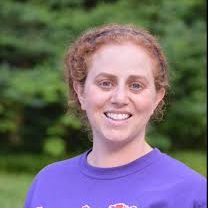

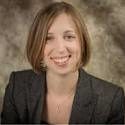
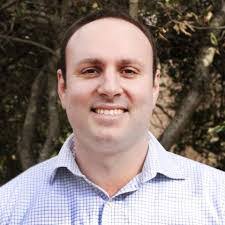
The 2013 Pew Research Center study on the North American Jewish Community, along with Leading Edge’s Leading Places to Work surveys, have informed us that Jewish community professionals are inspired by their organizational missions yet often dissatisfied by many aspects of their jobs. These data points are instructive. Yet behind this data are the narratives, individual journeys, detailed experiences, inflection points, and broader stories of our Jewish community professionals who can help us understand how those who are emerging as the professional leaders of today and tomorrow choose to enter, remain, leave, and in some cases return to, our workforce.
These narratives can provide deep understanding of what our professionals want to accomplish, what they want in return, and how each truly desires to feel valued. I was inspired by this approach during my time working at the Jewish Theological Seminary (JTS). I had the pleasure of learning from my colleague Rabbi Dr. Sarah Tauber, z’l. Building off the work of her dissertation, Dr. Tauber published Open Minds, Devoted Hearts: Portraits of Adult Religious Educators, which examines the work and life of three Rabbis, noting that Rabbis are more than spiritual leaders; they take on many forms: community leaders, educators, and, facilitators to name a few. By using portraiture as a form of research, Dr. Tauber came to many compelling conclusions, and “helped reveal how constructing personal meaning and building sacred community through study situates adult learning as a dynamic centerpiece of an energized congregational life.” Dr. Tauber’s work inspired me to use portraiture for this exploration. Dr. Tauber departed from this world just as I finalized this book. I am indebted to her wisdom, creativity, and kindness in helping me with this project (thank you Sarah).
In this text, we will similarly use portraiture to reveal the big ideas on how best to motivate and inspire Jewish community professionals.
Who is a Jewish Community Professional?
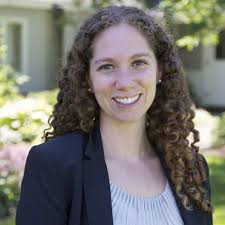


Let us also clarify our terminology. For example, when we say, “Jewish community professional,” what do we mean?
In 2009 and 2010, this Jewish Communal Service Association (or JCSA, which is now JPRO Network) surveyed 2400 self-identified Jewish community professionals, and none were able to agree on a singular definition. Rather, the exploration of the term leads to additional questions:
- Does one have to identify or be identified as Jewish to be a Jewish professional?
- Does one have to occupy a classified (as per government or union labor standards) professional role (instead of say clerical or maintenance role) to be considered a Jewish community professional?
- Does one have to be actively working for a self-described Jewish organization to be a Jewish community professional?
- Is one required to earn a certain credential to be considered a Jewish community professional, whether it be a specific academic degree or certificate, or must one have a Jewish educational background?
This is to say nothing of the organizations one must work in, or how to discern whether an organization is considered a “Jewish organization.” Is their Jewish “status” tied to the mission statement or whom the organization serves? What about professionals who are independent consultants and don’t work for particular organizations yet see themselves working for the Jewish community and Jewish people broadly? The conversation can be dizzying.
For the purposes of our work, I suggest my own definition of Jewish community professionals with the following criteria. A Jewish community professional is an individual who:
- chooses to identify as one
- has a specific expertise or skill-set that can serve an organization or fellow individuals that self-identify as “Jewish” or “primarily serving the Jewish community.”
- is intentional about serving a self-identified Jewish organization or the Jewish community.
This tripartite definition implies a few things. One, if an individual works for a Jewish organization but does not consider themselves a Jewish community professional, in my view, we should not force the label onto them. While we may wish they identify as a Jewish community professional, I see no value in coercing them into the category. For example, a CFO, programming or marketing professional, or maintenance director at a JCC might not want to label themselves a Jewish community professional. We might like them to. Yet, if we forced the issue, it would be like saying that a hospital CFO or maintenance worker works in the field of medicine. To be clear, this principle applies regardless of whether or not they self-identify as Jewish. People of all faiths or no faith can be and are Jewish community professionals.
Two, if an individual’s intent is to serve Jewish life, they ought to want to grow in their knowledge and understanding of Jewish content and the skills they view as applicable to their work. Similarly, they should see their contributions, whether as a Jewish educator, development officer, marketing professional, or administrator, as serving their Jewish organization in a way that reflects their own growing expertise and interests.
For our purposes, I chose to profile individuals who fit within this definition. My aspiration is that these definitions do not forcibly include individuals who don’t want to be labelled thus, nor forcibly exclude individuals who want to be included in this field definition.
What are we trying to change?

In my two decades working in Jewish organizational life, I have observed many Jewish community professional peers state that they happened to fall into Jewish professional work. I occasionally, yet rarely, encounter a Generation X or Millennial Jewish professional who began aspiring to this career path when they were a teen or college student. I have also observed that many Jewish community professionals who supervise others do not necessarily have the training or skills to do so effectively, or, their methods may no longer fit in today’s workplace.
Let me clear, I believe our hearts are in the right place and that most of us strive to promote a work culture that helps employees thrive. Yet, relative to keeping a balanced budget and our end-users satisfied, we may not always prioritize the career motivations, and personal health and well-being of our workforce as much as we could be.
As I finalize this chapter during COVID-19, we are learning that staff’s mental health and well-being are being impacted. According to the June 2020 pulse survey by Leading Edge, only 69% of professionals feel that their organizations support their health and well-being. In a field north of 80,000 Jewish professionals, that’s a lot of talent who may not feel adequately supported.
Even before COVID-19, the results of the Leading Places to Work Studies by Leading Edge indicated that 47% of employees do not receive a meaningful performance review. The studies also indicated that employees do not always have the proper skill sets to effectively offer regular meaningful feedback to each other, and an alarming number of new Jewish community professionals leave their organizations, and often the field as a whole, within five years of taking their first Jewish community professional job.
How might we then learn from for the stories of our professionals in order to strengthen how we demonstrate value to and therefore bless our talent? As we read through the stories and big ideas in this book, I encourage each of us to take more time to deeply get to know our staff, by actively listening to them and understanding what makes them tick.
OUR GOLDEN RULE: If we deeply get to know who we work with, we can better motivate, inspire and demonstrate value towards them so they feel blessed at work.
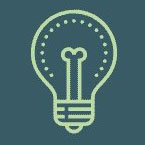
It is analogous to Rabbi Hillel and his articulation of the golden role: “What is harmful to you, do not do unto any person. That is the whole Torah, the rest is commentary, go and study.” Consider truly getting to know our staff as our Bless Our Workforce golden rule, the rest of this volume is commentary for us to study.
Part of a Larger Movement
Of course, the important and scared work of blessing our workforce isn’t occurring in a vacuum. In recent years, dozens of national agencies, including Hillel International, Jewish Federations of North America, JCC Association of North America, Foundation for Jewish Camp, JPRO Network, and Leading Edge, have been addressing staff investment and leadership development, endeavoring to strengthen the Jewish workplace experience, cultivate and retain talent, and reduce the perceived professional leadership gap in Jewish professional life. The work up until now has shown tremendous promise. We have, for example, seen an increase in professional leadership programs, some of which I have had the honor to either develop and lead or participate in. We have slowly begun to see significant wage increases, more clearly crafted job descriptions, more Jewish organizations adopting paid parental leave policies, and at least a stated desire for our field to be more gender and racially equitable. I hope Bless Our Workforce can support these field building efforts with continuous focus on the individual Jewish community professional, taking into account each of their preferences so we can best value, support, nurture, and guide each of them.
Engaging with the Blessings
I hope reading the journeys and big-ideas from each of these impressive colleagues will help us shift many of our assumptions, amplify practices that prioritize our talent we are already doing well and adjust practices that are not properly serving our workforce.
Following the 13 narratives, chapters 14 and 15 will help us reflect on what we have learned, extrapolating major lessons. These sections will highlight what we are already doing right and should amplify, along with where we need to adjust. Finally, just as we got ready with this pre-blessing, there is a post-blessing, closing with learning from our Jewish tradition that allows us to take our learning into practice with confidence, curiosity, care, and an updated game plan so we can truly bless our workforce each day.
